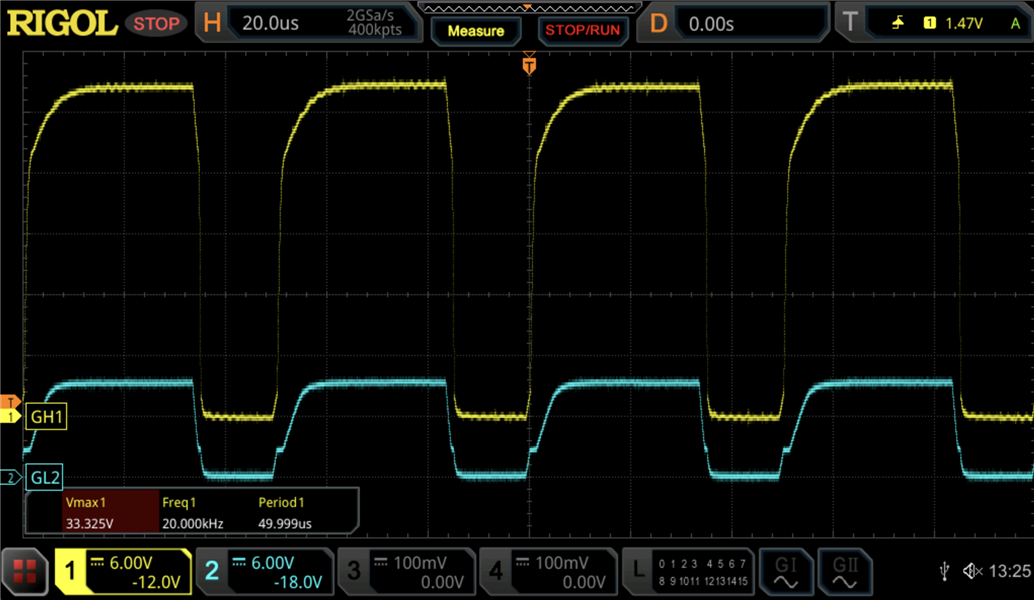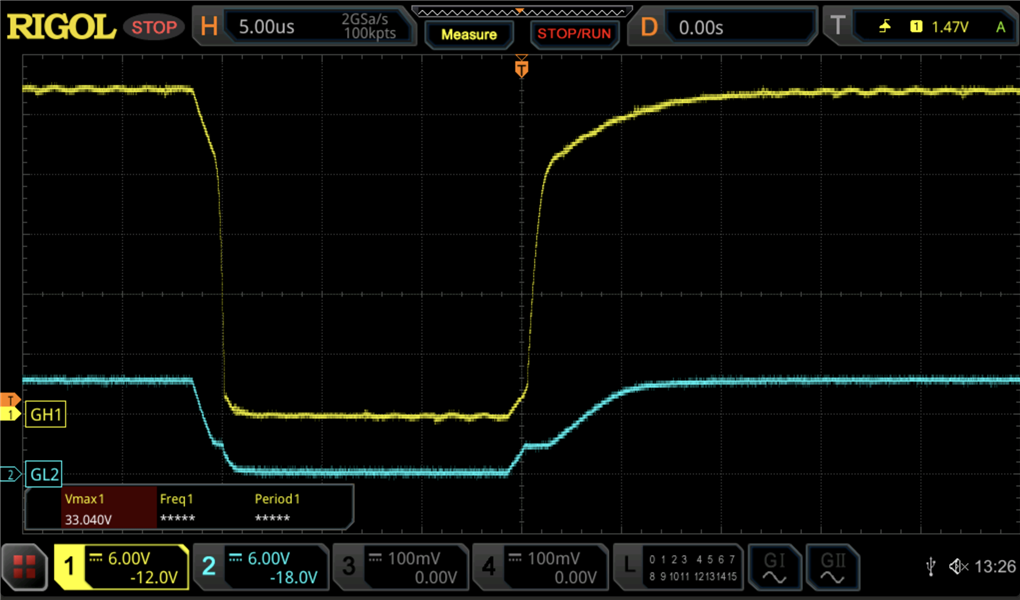Tool/software:
Hello
I have developed motor driver board using DRV8701, everything works, however the MOSFETs are getting too hot. I want to understand why and how i can optimize this.

Application details:
- VCC = 24V
- VREF = 1.6V
- I don't use R2, i only use R1 with a 68K to AVDD, so my iDrive config is 150/300mA
- Rsense = 15mOhm
- iChop is set to around 5Amps
- The MOSFET i use is WSD60N10GDN56, datasheet here. The reason for this choice is because the current product already uses this MOSFET.
- PWM frequency = 20kHz
If i use a lower PWM frequency the MOSFET does not get that hot, acceptable performance at around 5kHZ but the problem is that this is in the audible range and it's not an option for our application.
If you think that replacing the MOSFET should solve this issue, do you think BSC098N10NS5(datasheet) would be a good choice?
I suspect one of the issues could be the gate charge on the WSD60N10GDN56 or maybe my iDrive is not set correctly?
Any help is appreciated
Some oscilloscope observations:


As you can see in the image below, our motor load changes constantly as we are driving a piston. I don't know if this affects the driver in any way.




